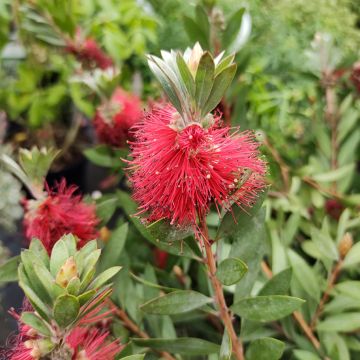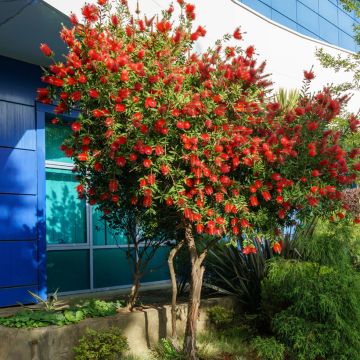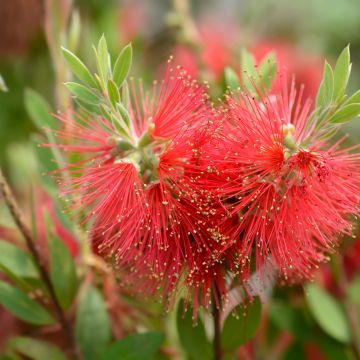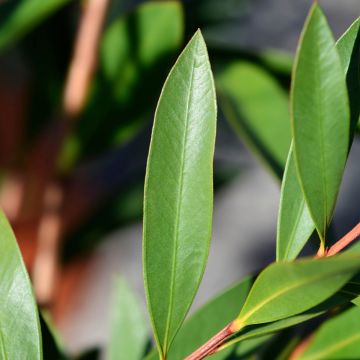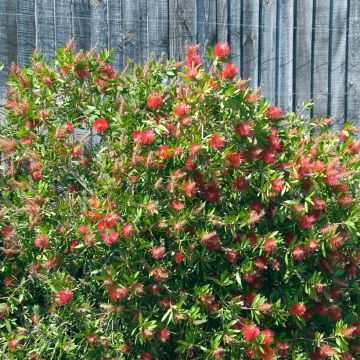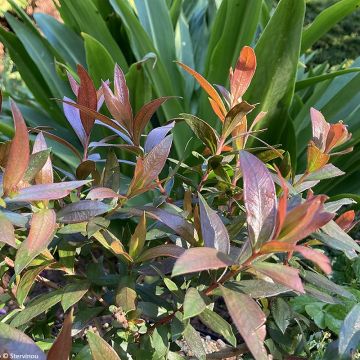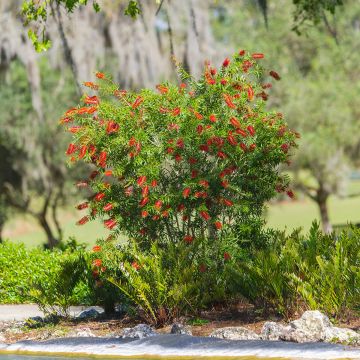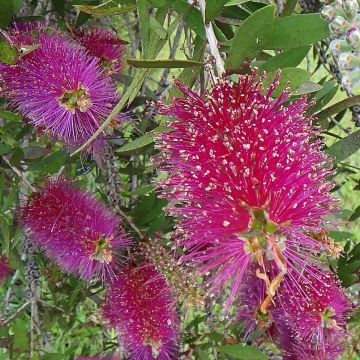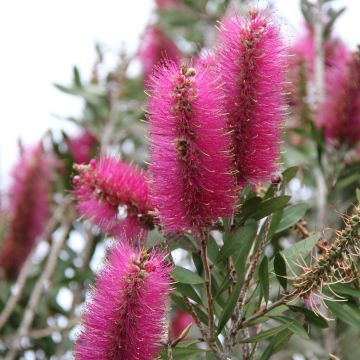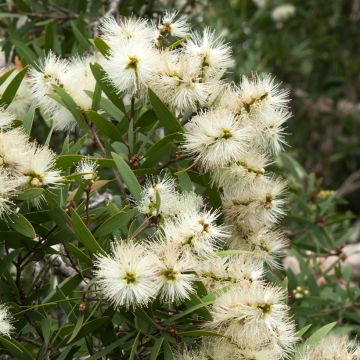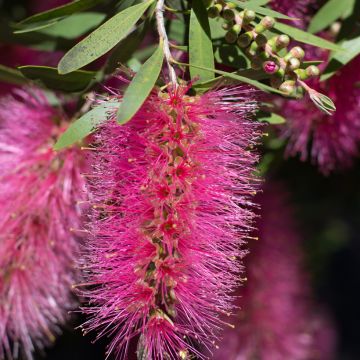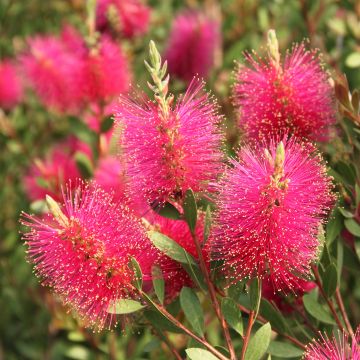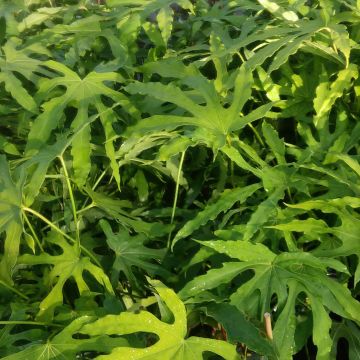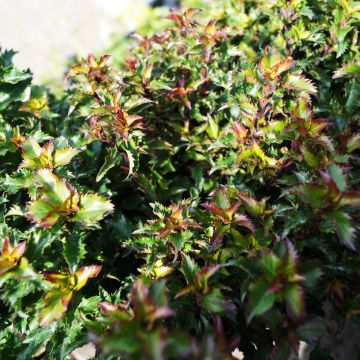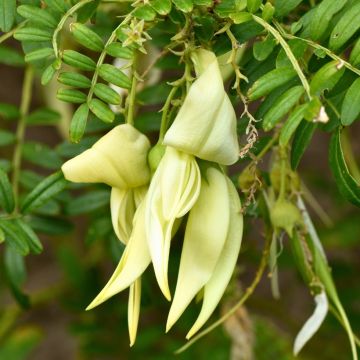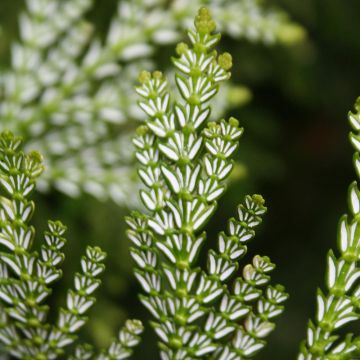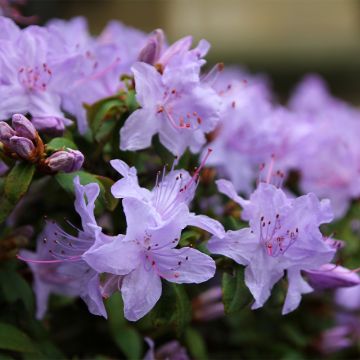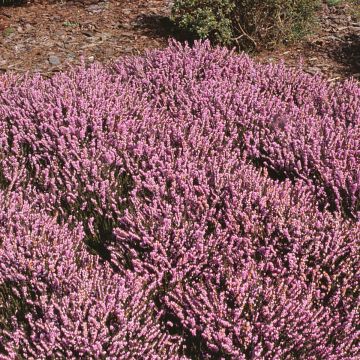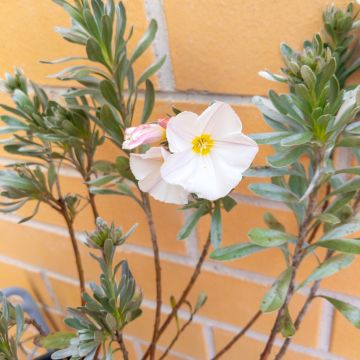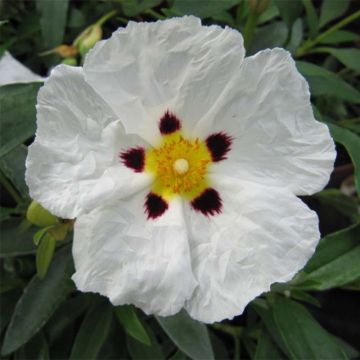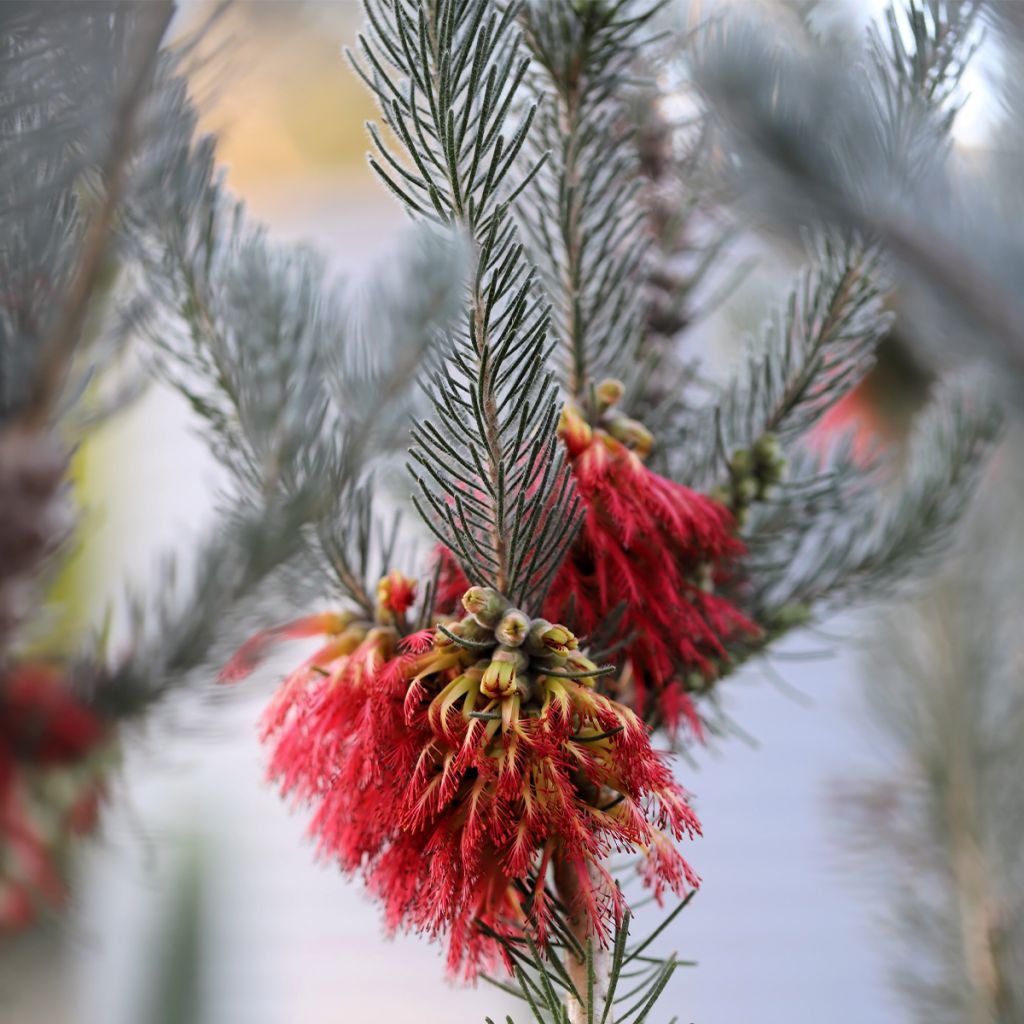

Calothamnus quadrifidus Grey Form
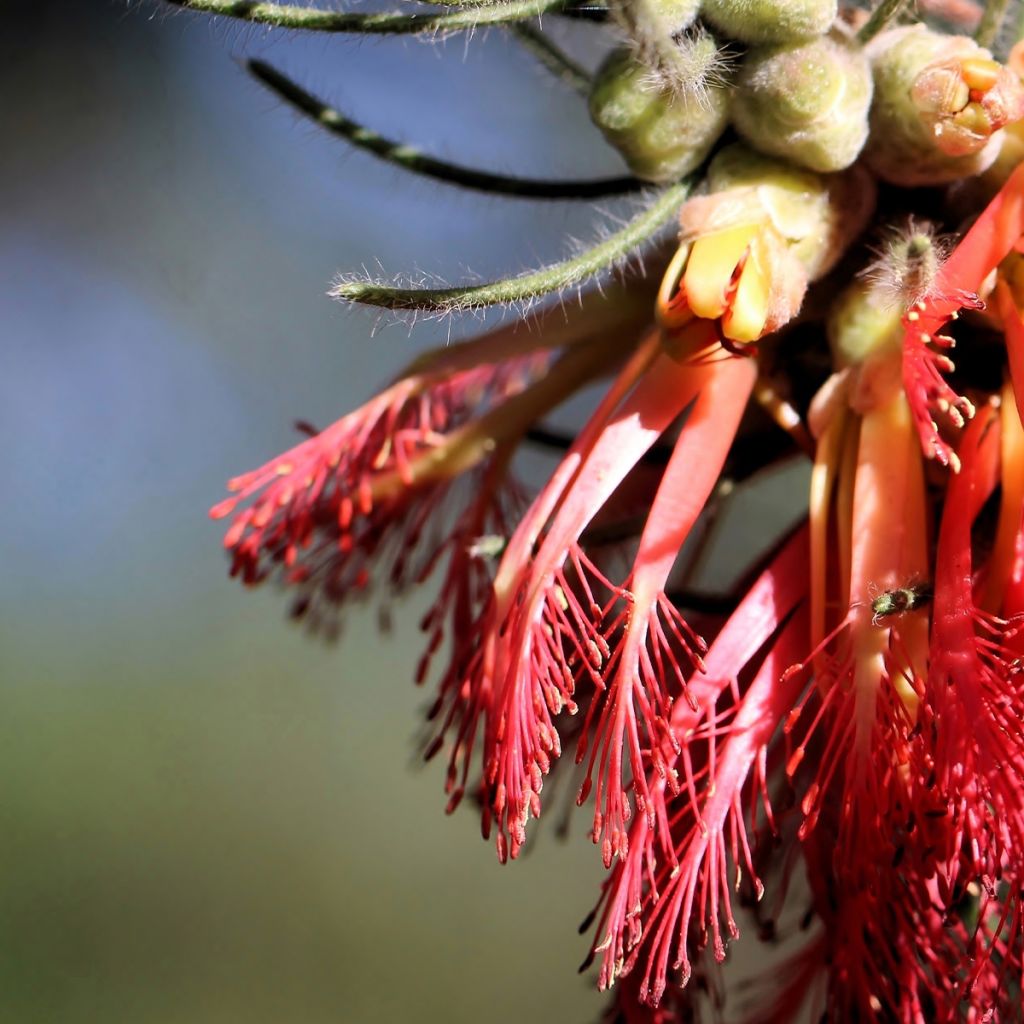

Calothamnus quadrifidus Grey Form
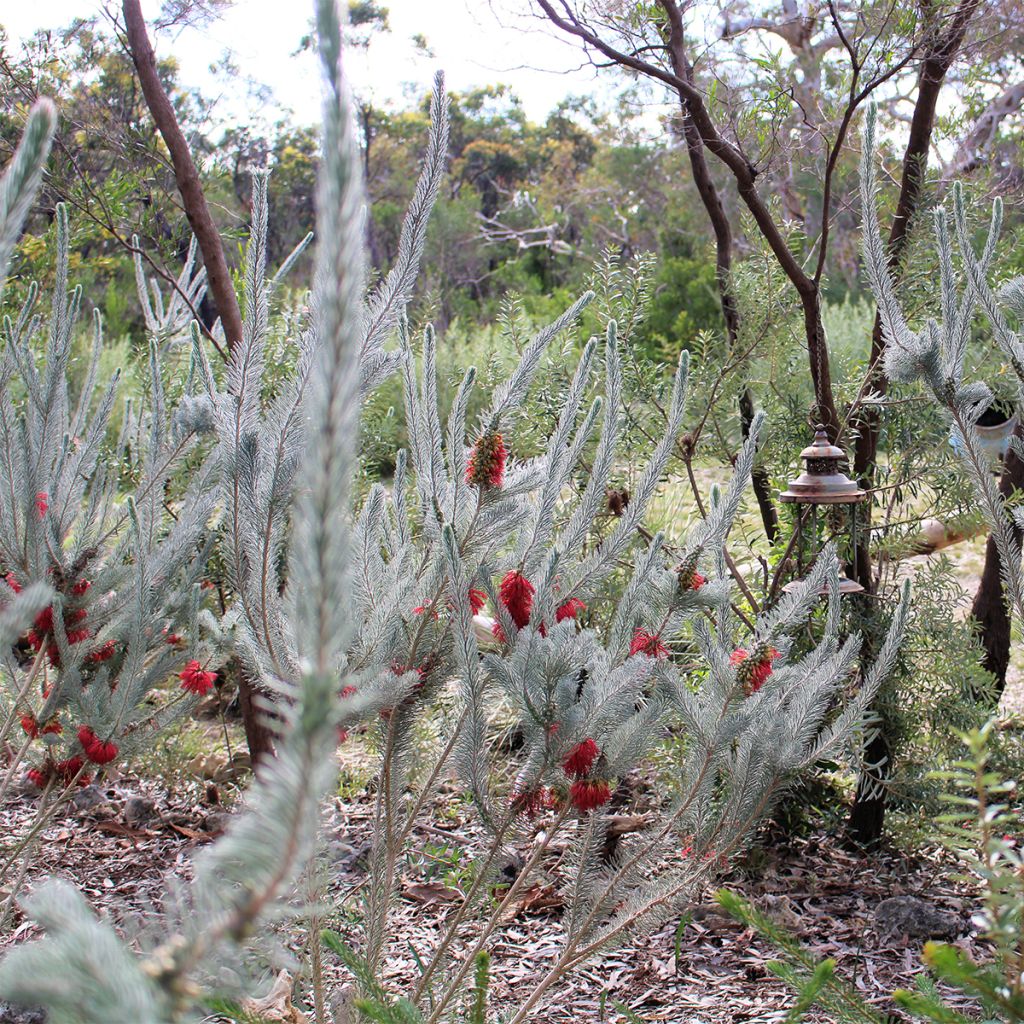

Calothamnus quadrifidus Grey Form
Calothamnus quadrifidus Grey Form
Calothamnus quadrifidus Grey Form
One-sided Bottlebrush, Claw Honey-myrtle, Common Net Bush
Why not try an alternative variety in stock?
View all →This plant carries a 24 months recovery warranty
More information
We guarantee the quality of our plants for a full growing cycle, and will replace at our expense any plant that fails to recover under normal climatic and planting conditions.
From €5.90 for pickup delivery and €6.90 for home delivery
Express home delivery from €8.90.
Does this plant fit my garden?
Set up your Plantfit profile →
Description
Calothamnus quadrifidus Grey Form or Grey Leaf is, as its name suggests, a beautiful form with grey and fluffy foliage of an original Australian shrub. Its silhouette and delicate foliage resemble a conifer, while its red spike-like flowering betrays its relationship with callistemons. It spreads over a long summer period, taking the form of numerous feathery flowers gathered in spikes on one side of the branches. It is a tender plant but does rather well in any slightly acidic to calcareous soil that is properly drained. Magnificent in the ground in the most sheltered gardens, it also grows in a large pot to overwinter everywhere else.
Calothamnus quadrifidus 'Grey Leaf' is an evergreen shrub of the myrtle family, related to Callistemons, myrtles, and Melaleuca. The typical species, with greener foliage, grows spontaneously in the open forests of southwestern Australia, on sandy or rocky, clay-limestone soils, or on granite outcrops. Its region of origin is subject to a Mediterranean-type climate: dry and hot in summer; very mild and humid in winter. When mature, it is hardy down to a minimum of -4 °C ( 24.8 °F).
The 'Grey Form' Calothamnus is a beautiful bushy and rounded, well-branched shrub. It grows rapidly, reaching about 3 m (9 ft 10 in) in all directions in the ground, but much less if grown in a pot. The branches are adorned with simple leaves, in the shape of rounded section needles, not exceeding 4 cm (1.6 in) in length, that are arranged alternately and aromatic when crushed. They are covered with numerous white hairs that give them a pretty silver-grey colour. Flowering occurs from May-June to August-September. The tiny flowers have prominent stamens of a very bright red and are fused into very decorative bundles, called staminal claws. They are produced in the axils of the leaves on one side of the one or two-year-old branches. Together, they form a spike about twenty centimetres (7.9 inches) long. This flowering, honey and nectar-bearing, attracts many pollinating insects to the garden. The fruit is a very hard globular capsule. It will retain the small seeds for many years. It is often intense heat that will cause the capsules to burst. This characteristic reflects a perfect adaptation to regions regularly subjected to fires.
Calothamnus quadrifidus Grey Leaf is an extraordinary southern plant with the appearance of a grey conifer, with long-lasting scarlet flowers in summer. With a little care and sheltered from the cold, it becomes an interesting subject to place alone in the centre of a mass of low-growing or creeping plants in a coastal garden. To accompany it, one can choose, for example, creeping rosemary, small-sized cistus (Cistus x pulverulentus, Cistus x skanbergii), Convolvulus cneorum, Nepeta x faassenii, etc. In a free hedge, it can be combined with Grevillea, Caesalpinia gillesii, Leptospermum, Melaleuca, etc. It can also be associated with a white or yellow oleander, Chilean mimosa, or Cassia corymbosa. Its good tolerance to salt allows for coastal exposure, facing wind and spray.
Report an error about the product description
Calothamnus quadrifidus Grey Form in pictures
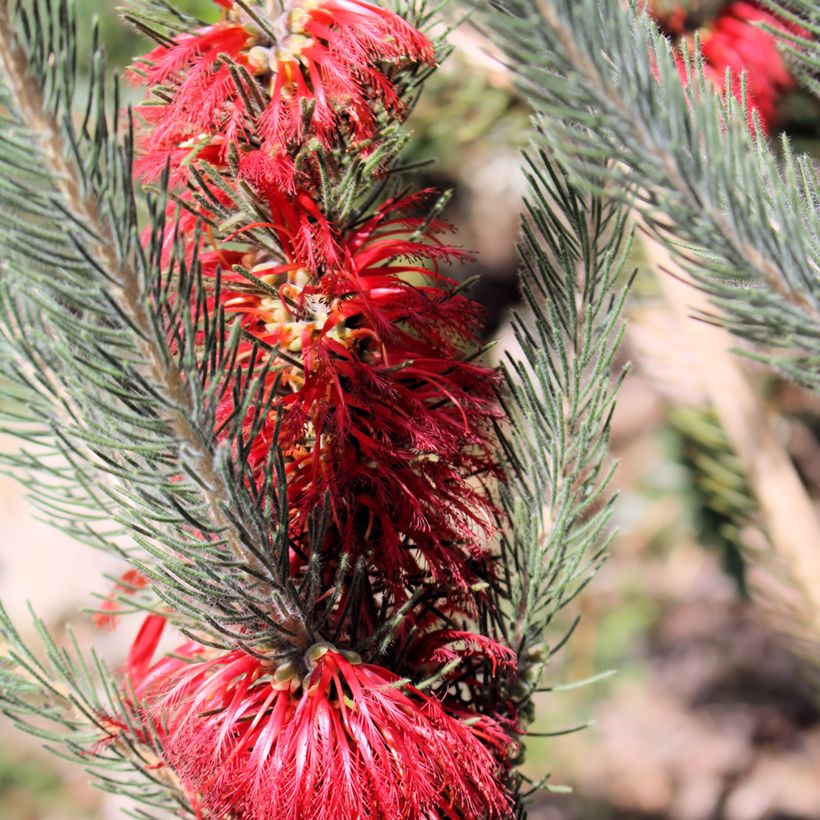

Plant habit
Flowering
Foliage
Botanical data
Calothamnus
quadrifidus
Grey Form
Myrtaceae
One-sided Bottlebrush, Claw Honey-myrtle, Common Net Bush
Australia
Other Callistemon
Planting and care
Calothamnus quadrifidus Grey Form (Grey Leaf) is planted in open ground in coastal regions spared from frost: it is hardy down to a minimum of -4 °C (24.8 °F) once mature. Elsewhere, it is cultivated in pots to overwinter in a cold or temperate greenhouse, frost-free. It will not tolerate being brought indoors in a heated environment. This shrub will thrive in the sun, in well-drained soil that is moist to dry in summer (in open ground), even though it appreciates watering to support its beautiful flowering. Loose, light soil, whether loamy, slightly rocky or sandy, slightly acidic, neutral or even calcareous and clayey, will be suitable. If your soil tends to be heavy, it is preferable to dig a hole that you then fill with a mixture of potting soil, coarse sand or gravel, and garden soil. This species tolerates sea spray well. It is moderately drought-resistant; however, it is necessary to monitor watering during the first two summers.
Pot cultivation:
Provide good drainage at the bottom of the pot, which should be of a large volume. Use a lightweight substrate, enriched with leaf compost, and apply a little slow-release fertiliser in late winter and autumn. Avoid fertilisers rich in phosphorus. Water generously in summer, allowing the soil to dry out slightly between waterings.
Planting period
Intended location
Care
This item has not been reviewed yet - be the first to leave a review about it.
Evergreen shrubs
Haven't found what you were looking for?
Hardiness is the lowest winter temperature a plant can endure without suffering serious damage or even dying. However, hardiness is affected by location (a sheltered area, such as a patio), protection (winter cover) and soil type (hardiness is improved by well-drained soil).

Photo Sharing Terms & Conditions
In order to encourage gardeners to interact and share their experiences, Promesse de fleurs offers various media enabling content to be uploaded onto its Site - in particular via the ‘Photo sharing’ module.
The User agrees to refrain from:
- Posting any content that is illegal, prejudicial, insulting, racist, inciteful to hatred, revisionist, contrary to public decency, that infringes on privacy or on the privacy rights of third parties, in particular the publicity rights of persons and goods, intellectual property rights, or the right to privacy.
- Submitting content on behalf of a third party;
- Impersonate the identity of a third party and/or publish any personal information about a third party;
In general, the User undertakes to refrain from any unethical behaviour.
All Content (in particular text, comments, files, images, photos, videos, creative works, etc.), which may be subject to property or intellectual property rights, image or other private rights, shall remain the property of the User, subject to the limited rights granted by the terms of the licence granted by Promesse de fleurs as stated below. Users are at liberty to publish or not to publish such Content on the Site, notably via the ‘Photo Sharing’ facility, and accept that this Content shall be made public and freely accessible, notably on the Internet.
Users further acknowledge, undertake to have ,and guarantee that they hold all necessary rights and permissions to publish such material on the Site, in particular with regard to the legislation in force pertaining to any privacy, property, intellectual property, image, or contractual rights, or rights of any other nature. By publishing such Content on the Site, Users acknowledge accepting full liability as publishers of the Content within the meaning of the law, and grant Promesse de fleurs, free of charge, an inclusive, worldwide licence for the said Content for the entire duration of its publication, including all reproduction, representation, up/downloading, displaying, performing, transmission, and storage rights.
Users also grant permission for their name to be linked to the Content and accept that this link may not always be made available.
By engaging in posting material, Users consent to their Content becoming automatically accessible on the Internet, in particular on other sites and/or blogs and/or web pages of the Promesse de fleurs site, including in particular social pages and the Promesse de fleurs catalogue.
Users may secure the removal of entrusted content free of charge by issuing a simple request via our contact form.
The flowering period indicated on our website applies to countries and regions located in USDA zone 8 (France, the United Kingdom, Ireland, the Netherlands, etc.)
It will vary according to where you live:
- In zones 9 to 10 (Italy, Spain, Greece, etc.), flowering will occur about 2 to 4 weeks earlier.
- In zones 6 to 7 (Germany, Poland, Slovenia, and lower mountainous regions), flowering will be delayed by 2 to 3 weeks.
- In zone 5 (Central Europe, Scandinavia), blooming will be delayed by 3 to 5 weeks.
In temperate climates, pruning of spring-flowering shrubs (forsythia, spireas, etc.) should be done just after flowering.
Pruning of summer-flowering shrubs (Indian Lilac, Perovskia, etc.) can be done in winter or spring.
In cold regions as well as with frost-sensitive plants, avoid pruning too early when severe frosts may still occur.
The planting period indicated on our website applies to countries and regions located in USDA zone 8 (France, United Kingdom, Ireland, Netherlands).
It will vary according to where you live:
- In Mediterranean zones (Marseille, Madrid, Milan, etc.), autumn and winter are the best planting periods.
- In continental zones (Strasbourg, Munich, Vienna, etc.), delay planting by 2 to 3 weeks in spring and bring it forward by 2 to 4 weeks in autumn.
- In mountainous regions (the Alps, Pyrenees, Carpathians, etc.), it is best to plant in late spring (May-June) or late summer (August-September).
The harvesting period indicated on our website applies to countries and regions in USDA zone 8 (France, England, Ireland, the Netherlands).
In colder areas (Scandinavia, Poland, Austria...) fruit and vegetable harvests are likely to be delayed by 3-4 weeks.
In warmer areas (Italy, Spain, Greece, etc.), harvesting will probably take place earlier, depending on weather conditions.
The sowing periods indicated on our website apply to countries and regions within USDA Zone 8 (France, UK, Ireland, Netherlands).
In colder areas (Scandinavia, Poland, Austria...), delay any outdoor sowing by 3-4 weeks, or sow under glass.
In warmer climes (Italy, Spain, Greece, etc.), bring outdoor sowing forward by a few weeks.

































